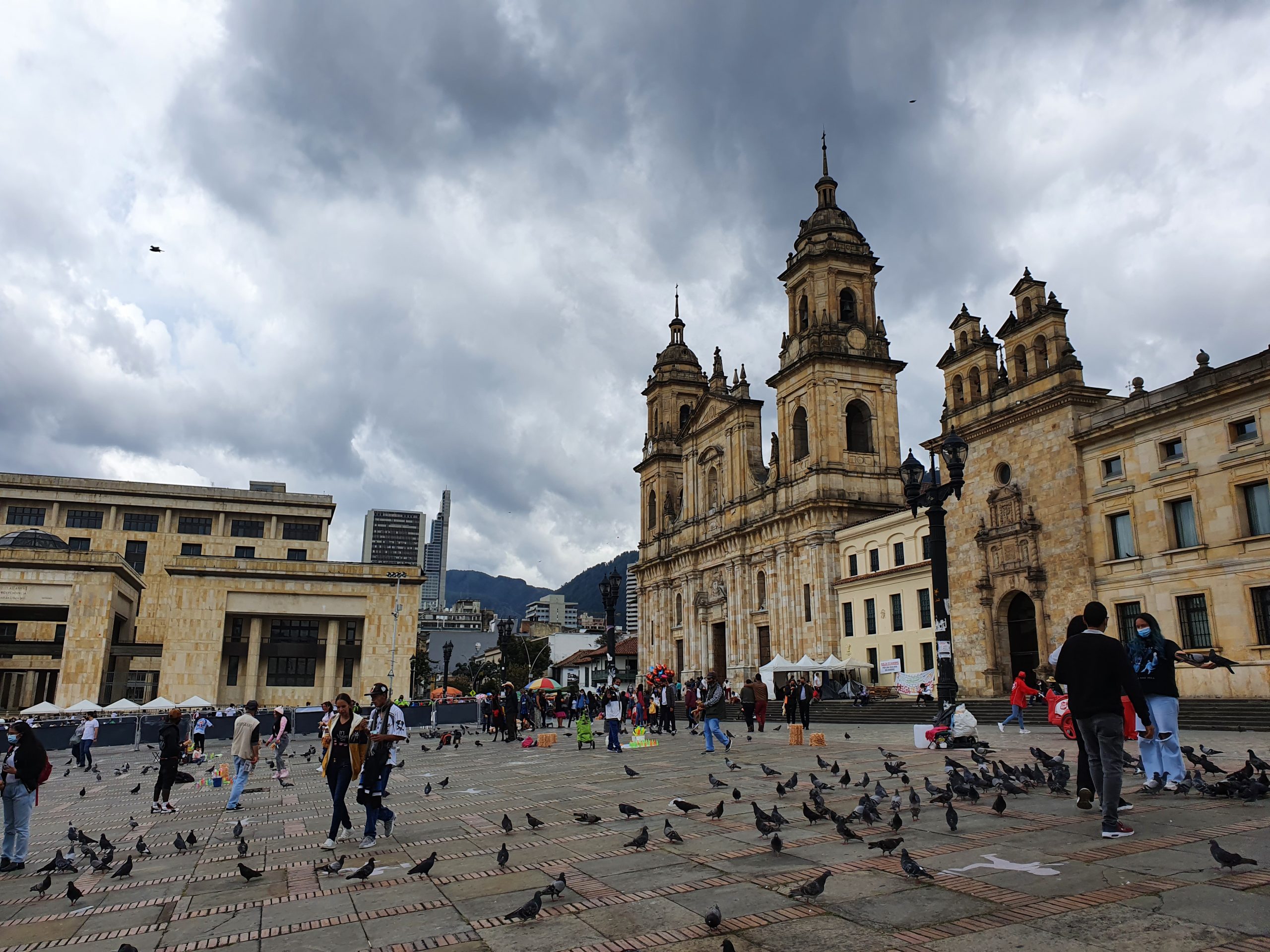Trip date: October 2021
Why Bogotá?
- I was thinking about a last-minute trip. South America was my first choice.
- Bogotá also has pretty cool city views as well as that of the Andes Mountains.
- I wanted to go to Colombia
I’ve been thinking a lot about my first solo trip after a two-year hiatus. My last solo trip was to Easter Island in August 2019. Naturally I wanted to return to South America, but I wanted to visit a new country. After lots of flight searching, I found a good deal for Bogotá, and booked my ticket about a week before departure.

But… What About Safety?
Yes… I’ve been told this many, many times before. However, the more I researched the better I felt. As with any large city, there is crime. The simplest way is to stay away from those areas. If you must visit an “unsafe” area, take basic precautions: no jewelry, keep your mobile phone in your pocket, et cetera.
I quickly booked the AC Hotel Bogotá Zona T, which is a great area with restaurants, bars and shopping. This would be my base for the stay. One other thing I did for this trip was to book my airport transportation with the hotel. It definitely cost more than booking it yourself, but at least I know it’s safe.
Day 1: Free Walking Tour in La Candelaria
I booked a free walking tour with Beyond Colombia, so I could walk around the La Candelaria (historic center) with a group. It was a great choice. I learned more about the city, and also the people. We were approached by several folks asking us for money, but they just walked away when we politely declined. The tour lasted approximately 3 hours. Please don’t forget to tip your guide. I tipped 20.000 Colombian Pesos (US$5.31).
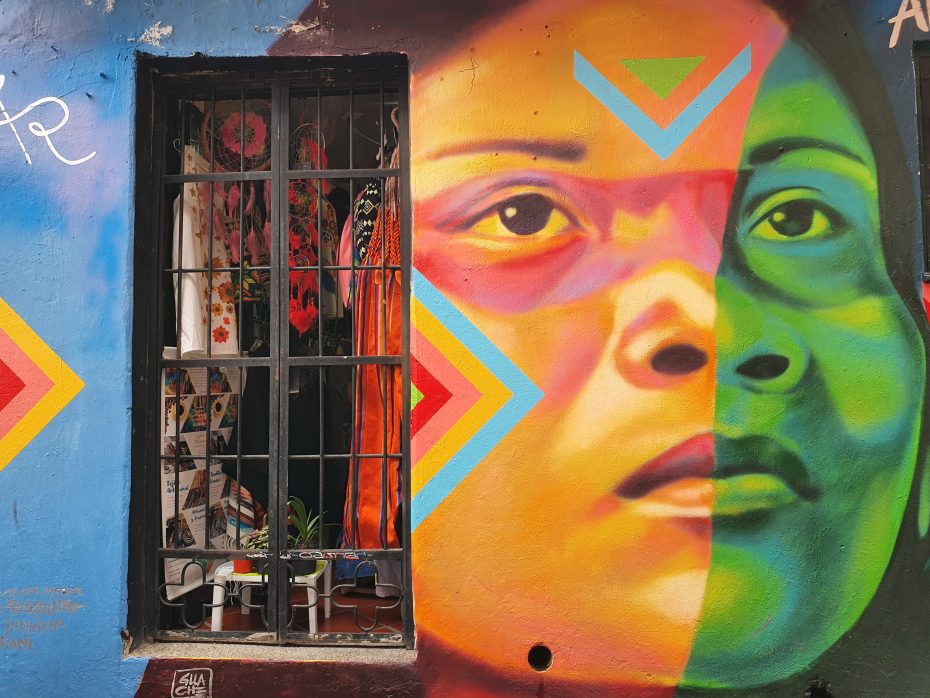

In the center there are quite a few major attractions, including the Gold Museum (Museo del Oro) and the Botero Museum (Museo Botero). The Gold Museum currently requires a reservation in order to visit, and it’s recommended to book at least a day in advance. You’ll then get an email confirmation with an entry time. Show the confirmation to the security personnel at the museum and you may enter at that time. The Botero Museum does have a reservation system, but it’s not required for entry. Both museums are free to visit.
Since I didn’t know about the reservation system at the Museo del Oro, I didn’t get to visit it on my first day. I did walk to the Museo Botero and finally came face-to-face with Botero’s artwork. The courtyard is a great place to sit and enjoy the atmosphere.
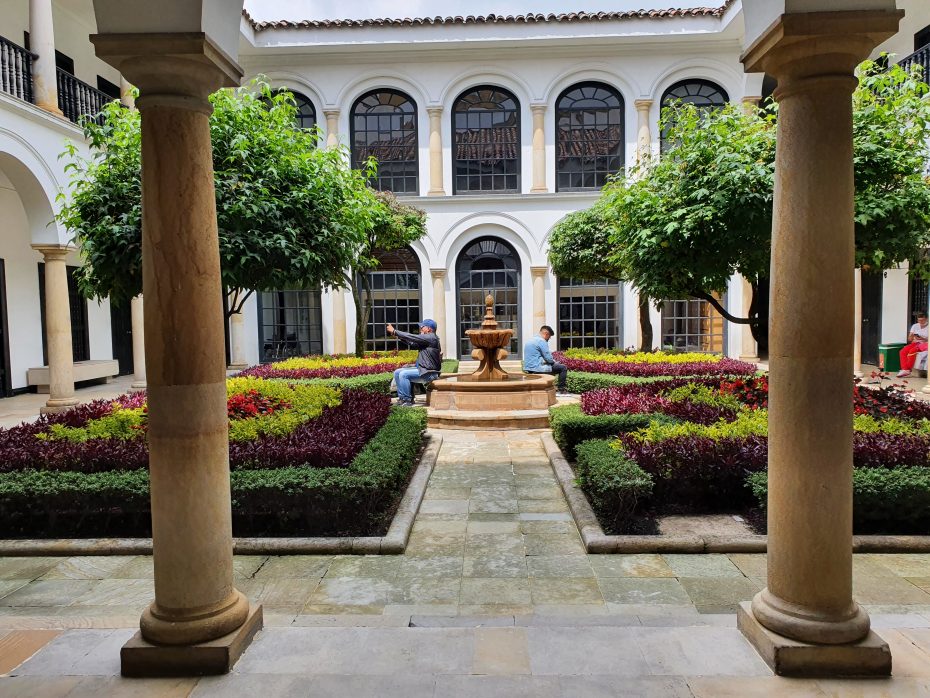


Day 2: Trip to Zipaquirá and a Visit to the Museo del Oro
I made a last-minute decision to visit Zipaquirá for the Salt Cathedral (Catedral da Sal). Well, I had booked one of my Uber drivers for the trip at 100.000 Colombian Pesos (US$26.53), but then he had to cancel. I then talked to my airport driver and he wanted 220.000 Colombian Pesos (US$58.39) for the four-hour trip. I said yes and he showed up within 30 minutes.
The Salt Cathedral was amazing. It’s basically a cathedral 600 feet under ground built by miners and sculptors out of rock salt. I walked through a long tunnel with 14 stations of the crosses, each depicting different events in Jesus’ life. At the end of the long, long series of tunnels I arrived at the Dome. One part of the Dome overlooks the main Cathedral, with a magnificent cross at the center.
I ended up spending about four hours roundtrip, two hours of it inside the Cathedral. My driver took me to a stand to buy a QR code ticket in advance so I didn’t have to stand in line. This saved us a lot of time as it was a holiday weekend in Colombia.


On the return my driver dropped me off at the Museo del Oro, where 34,000 gold pieces await. The exhibits depicted the use of gold in indigenous cultures of Colombia. The most famous is the Muisca raft depicting a chieftain who traveled to the center of Lake Guatavita and threw gold and emeralds into the water as an offering. This was supposedly the legend of El Dorado.

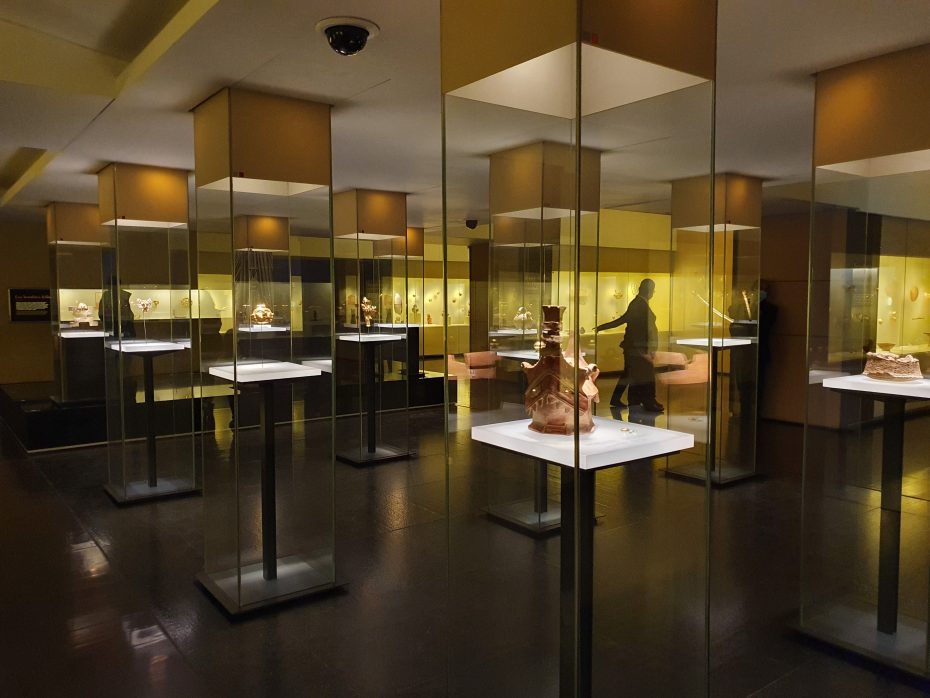

By the time I was done it was late afternoon. I went to Chapinero and Quinta Camacho districts and did a few coffee runs, including Libertario Coffee, Juan Valdez Origen and Colo Coffee. I particularly enjoyed the coffee at Libertario, even as a non-coffee drinker.
Dinner? Well, I decided to walk to Parque 93 in search of food. Since I was along, and we are still in the midst of a pandemic, I opted for a quick bite at La Lucha, my Peruvian favorite.

Day 3: Hike up Cerro Monserrate, More Coffee in Chapinero and Usaquén
It was my last day in Bogotá. And it was clear and beautiful. I took an Uber so I could visit the top of Monserrate Hill (Cerro Monserrate) to take in the view of the city. When I arrived at 9am, there were already so many people. The Uber driver asked me whether I planned to hike or take the funicular or cable car. I opted to hike.
The driver dropped me off at the entrance of the hike, which was free. People were already flocking up the steps. Not long later everyone began to slow down. This was not an easy hike. I also had the altitude against me. The hike started at 350m (1,148ft) and all the way up to the sanctuary at 2,350m (7,710ft).

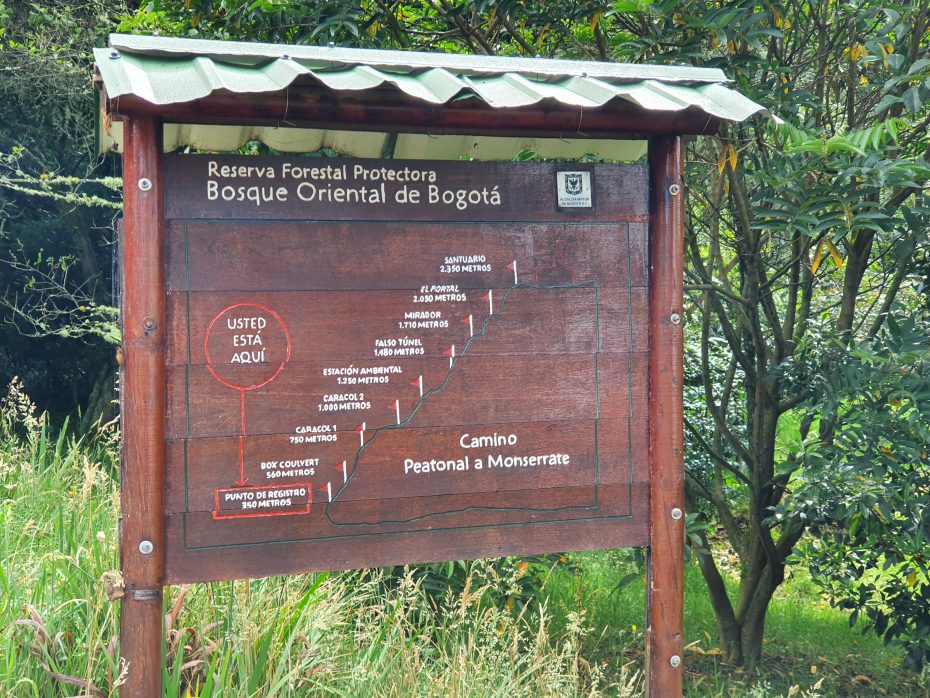
It was impossible to social distance with the crowds, and now with a strenuous hike it was impossible to keep my mask on, like everyone else. I had to remove it for the hike. Side note: in Bogotá people wear masks whenever they are outside, and they wear them correctly covering the nose and mouth. I would say about 95% of people outside wear them.
When I finally got to the top, I was rewarded with a spectacular view of the city. Oh, and with half the population of Bogotá right there with me. After enjoying the view I decided to take the cable car down. The ride was nice and quick. I actually enjoyed the TelefériQo better in Quito going up the Pichincha volcano.

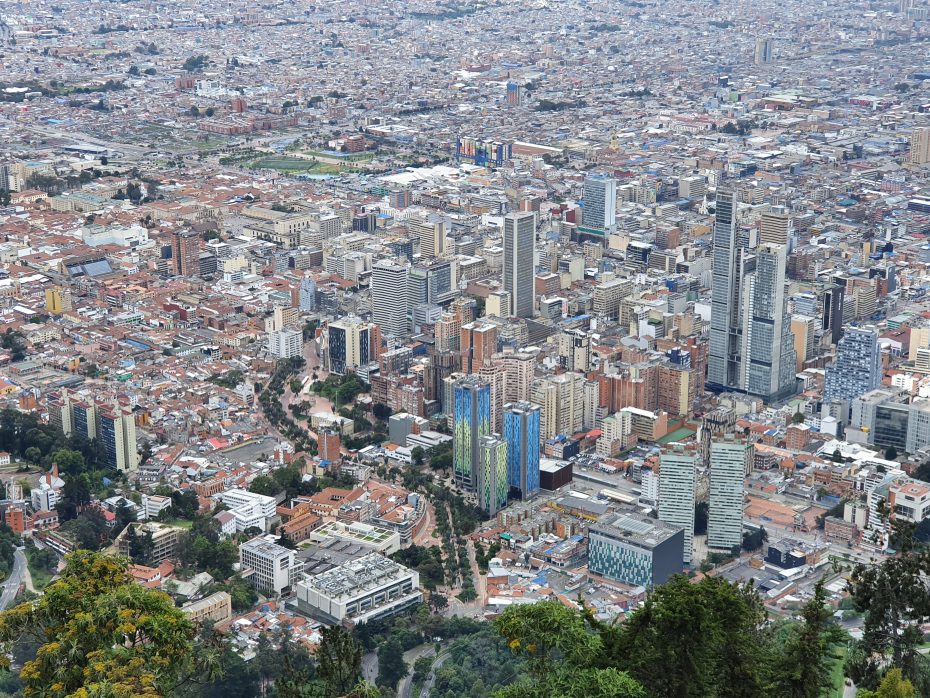
It was finally time to rest. I took yet another Uber ride to Chapinero back to Libertario Coffee to have a nice sandwich and a tinto (long black coffee). My ‘background noise’ was a Colombian woman next to me on her headset talking about her love life to a friend. Then it was a nice walk back to Zona T.
After resting up a bit, I went up to Parque Usaquén to check out the open-air markets, cafes and restaurants. I wish I had an appetite to try the food there, but it’ll have to be next time.
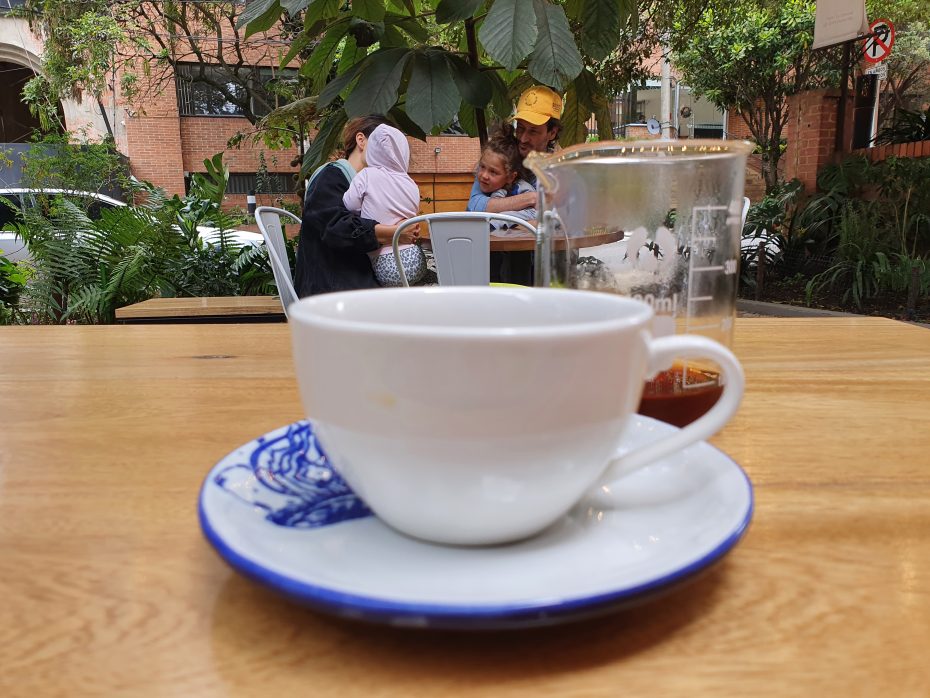


A Wonderful Weekend
Bogotá was a great city to visit, even as a solo traveler. I hope to return to Colombia soon and visit Medellín, Cartagena and even the countryside.
Practical Information
Airport Transportation: This was probably the most confusing. Bogotá airport did not have transportation desks inside the security area. I ended up booking a one-way from the airport to my hotel in Zona T. Cost: 65.000 Colombian Pesos (US$17.25). The return trip to the airport was 58.000 Colombian Pesos (US$15.39).
City Transportation: For longer distances within the city I used Uber. Uber was between less than 10.000 to 16.000 Colombian Pesos (US$2.65 – $4.25) per ride. Then you can add a 4, 6 or 8 percent tip on top. I did also get a Tullave card for the city bus system, but I didn’t get to use it as Uber was so convenient. Some may say Uber is illegal, but people use it anyway. It’s also safer than the yellow taxis.
Immigration procedures: You must fill out a Check Mig Form for entering and exiting Colombia. This form must be filled out no more than 48 hours of your flight (Edit: as of March 2022 it’s now 72 hours). You don’t need to print the form out, but save it on your phone so you can show it to the immigration officer on arrival. On departure, they will check the form before you enter the immigration area.
Covid Testing: There is no testing requirement for entering Colombia. Please check the requirements for the return to your home country.
Where to stay: I liked staying in Zona T, where there are lots of restaurants, shopping and more. Others like Chapinero, Usaquén and La Candelaria. In general, the higher your street number (Calle), the safer it is.
Money: Colombian Pesos. At the time of travel, US$1 = COP 3,768.09 (October 15, 2021)
Tipping: At restaurants they will ask you if you want to include service. You usually say yes. They will then add 10% to the bill.
Internet/Mobile Data: Internet is fast. For mobile data, you can purchase prepaid SIMs with one of the major carriers such as Claro or Movistar. I purchased one from Movistar, which cost 3.000 (US$0.80) for the SIM itself, and then I recharged 6.000 (US$1.59) to get a 7-day package. The package included unlimited Facebook, Whatsapp and Twitter, and then 1.3GB of mobile data. Bring your passport to buy your package.
Maps: As best practice, download an offline map using Google Maps to minimize data usage.
Weather: The weather report is not to be trusted. All of the weather sites predicted three days of thunderstorms with 90% probability. I ended up with a brief period of rain on the first day, and two mostly sunny days. The important thing is to bring layers, as you could easily experience four seasons in a day.
Official Tourism Site: The Colombia.travel site is the official place to go for information.
Postcard Rate: 5.000 Colombian Pesos, globally (US$1.33).

